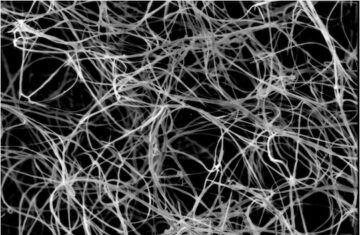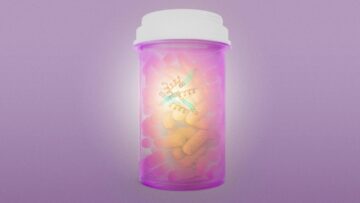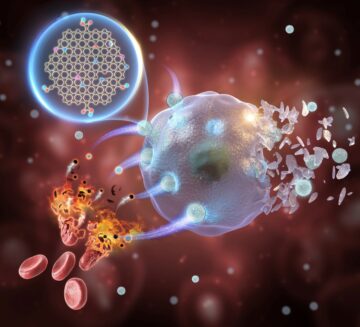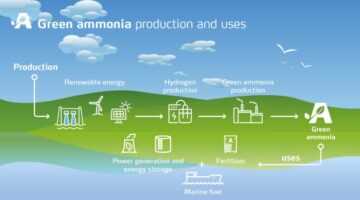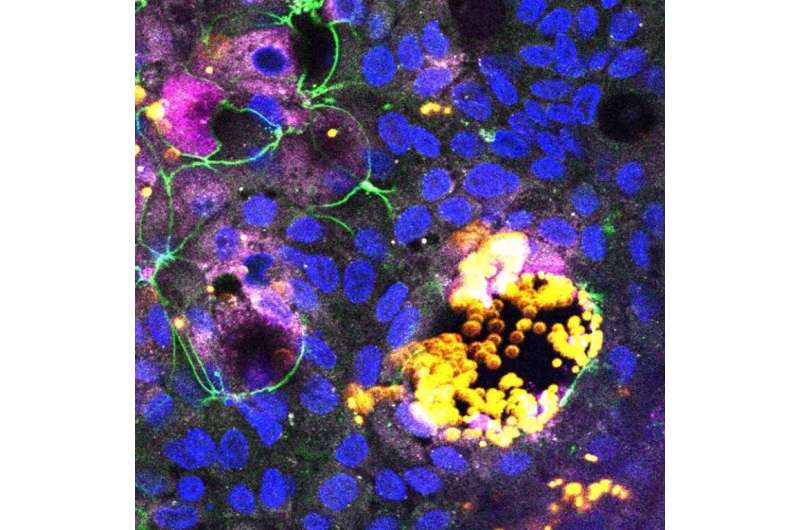
Plastics, widely used in various aspects of our lives, have become pervasive materials that end up in the waste stream after use. Over time, these plastics break down into tiny particles, known as microplastics and nano-plastics, which have entered our food supply and are unintentionally consumed.
These plastic particles, ranging in size from pollen to smaller than a virus, have infiltrated water supplies, agricultural soil beds, and both natural and domestic food chains. The impact of ingesting microplastics and nano-plastics has been challenging to study due to their ubiquitous presence, which makes it difficult to find unaffected individuals for comparison purposes. Furthermore, the lack of relevant laboratory models has hindered our understanding of how these particles affect cells.
Researchers at Tufts University School of Engineering have made significant progress in studying the potential inflammatory effects of plastic particles. They utilized human intestinal organoids, which are small tissue bundles composed of human cells obtained from biopsies. These organoids replicate the complexity of an actual intestinal environment, providing a suitable model for studying the effects of plastic particles on cells.
A recent study published in Nanotechnology, Biology and Medicine by the researchers at Tufts University School of Engineering, led by Ying Chen, a research assistant professor in biomedical engineering, revealed that higher concentrations of plastic particles triggered the secretion of inflammatory molecules associated with human inflammatory bowel disease (IBD). This groundbreaking discovery sheds light on the potential risks posed by plastic particles when ingested.
“We know that particulate plastic is everywhere in the environment, and it has been found in human intestines and other tissues, like blood, and even in the brain and placenta,” said Ying Chen, research assistant professor in biomedical engineering at Tufts University and co-lead author of the study. “The use of organoids allows us to study in detail the mechanisms of absorption and potential pathways to disease in a way that could help us make sense of the variable results in the literature up until now and have a more direct tissue model for potential effects of plastic particles on humans. Earlier clinical studies have found plastics accumulated in different tissues of living organisms, including the digestive tract, blood, liver, pancreas, heart, and even the brain.”
The findings of this study have significant commercial applications and benefits. Firstly, they can drive the development of safer plastic materials by identifying specific particle characteristics that trigger inflammation. This knowledge can inform the design and selection of materials in industries such as food packaging, where minimizing the migration of microplastics and nano-plastics into food products is crucial for consumer safety.
The market for technologies and products related to plastic pollution mitigation and human health impacts is expected to grow significantly in response to increased awareness and regulatory measures. The global plastic recycling market, valued at USD 40.6 billion, is projected to reach USD 68.81 billion by 2030.
Similarly, the global bioplastics market, offering reduced environmental impact and potential health benefits, is predicted to reach USD 63.65 by 2032. The findings from this study can contribute to shaping these markets by driving research and development efforts focused on safer plastic materials, efficient recycling technologies, and alternative packaging solutions.
In addition, the study emphasizes the need for innovative technologies and products in the field of environmental remediation to mitigate plastic pollution. Efficient and targeted solutions for removing plastic particles from water supplies, agricultural soil beds, and other environmental matrices can be developed based on these findings.
This presents an opportunity for companies to provide sustainable waste management solutions and contribute to reducing the environmental and health risks associated with plastic waste.
The study conducted by Tufts University School of Engineering on the inflammatory effects of plastic particles not only provides valuable insights into their impact on human health but also has significant implications for the development of safer plastic materials, advancements in food packaging, and environmental remediation.
As awareness of plastic pollution and its health consequences continues to grow, there are ample opportunities for innovative companies to provide sustainable and safer alternatives in the plastics industry, thus driving the market for plastic pollution mitigation technologies and products.
- SEO Powered Content & PR Distribution. Get Amplified Today.
- EVM Finance. Unified Interface for Decentralized Finance. Access Here.
- Quantum Media Group. IR/PR Amplified. Access Here.
- PlatoAiStream. Web3 Data Intelligence. Knowledge Amplified. Access Here.
- Source: https://genesisnanotech.wordpress.com/2023/06/17/as-microplastics-and-nano-plastics-enter-the-human-waste-stream-concern-grows-for-the-effects-and-impact-of-the-unintentionally-consumed-tiny-particles-what-to-do-tufts-university-school-of-enginee/
- :has
- :is
- :not
- :where
- $UP
- 1
- 2030
- 40
- 65
- a
- Accumulated
- actual
- addition
- advancements
- affect
- After
- Agricultural
- allows
- also
- alternative
- alternatives
- an
- and
- applications
- ARE
- AS
- aspects
- Assistant
- associated
- At
- author
- awareness
- based
- BE
- become
- been
- benefits
- Billion
- biology
- biomedical
- blood
- both
- Brain
- Break
- bundles
- but
- by
- CAN
- Cells
- chains
- challenging
- characteristics
- chen
- commercial
- Companies
- comparison
- complexity
- composed
- Concern
- conducted
- Consequences
- consumed
- consumer
- continues
- contribute
- could
- crucial
- Design
- detail
- developed
- Development
- different
- difficult
- direct
- discovery
- Disease
- do
- Domestic
- down
- drive
- driving
- due
- effects
- efficient
- efforts
- emphasizes
- end
- Engineering
- Enter
- entered
- Environment
- environmental
- Even
- expected
- field
- Files
- Find
- findings
- firstly
- focused
- food
- food supply
- For
- found
- from
- Furthermore
- Global
- groundbreaking
- Grow
- Grows
- Have
- Health
- Heart
- help
- How
- HTML
- HTTPS
- human
- Humans
- identifying
- Impact
- Impacts
- implications
- in
- Including
- increased
- individuals
- industries
- industry
- inflammation
- inflammatory
- inform
- innovative
- innovative technologies
- insights
- into
- IT
- ITS
- jpg
- Know
- knowledge
- known
- lab
- laboratory
- Lack
- Led
- light
- like
- lining
- literature
- Liver
- Lives
- living
- made
- make
- MAKES
- management
- Market
- Markets
- materials
- max-width
- measures
- mechanisms
- medicine
- migration
- minimizing
- Mitigate
- mitigation
- model
- models
- more
- nanotechnology
- Natural
- Need
- now
- obtained
- of
- offering
- on
- only
- opportunities
- Opportunity
- Other
- our
- over
- packaging
- particle
- plastic
- plastics
- plato
- Plato Data Intelligence
- PlatoData
- Pollen
- Pollution
- potential
- predicted
- presence
- presents
- Products
- Professor
- Progress
- projected
- provide
- provides
- providing
- published
- purposes
- ranging
- reach
- recent
- recycling
- Reduced
- reducing
- regulatory
- related
- relevant
- removing
- research
- research and development
- researchers
- response
- Results
- Revealed
- risks
- safer
- Safety
- Said
- School
- School of Engineering
- selection
- sense
- shaping
- shutterstock
- significant
- significantly
- Size
- small
- smaller
- soil
- Solutions
- specific
- stream
- Study
- Studying
- such
- suitable
- supply
- sustainable
- targeted
- Technologies
- than
- that
- The
- their
- There.
- These
- they
- this
- time
- tissues
- to
- trigger
- triggered
- tufts
- ubiquitous
- unaffected
- understanding
- university
- until
- us
- USD
- use
- used
- utilized
- Valuable
- valued
- various
- virus
- Waste
- Water
- Way..
- What
- when
- which
- widely
- with
- WordPress
- yellow
- YING
- zephyrnet

